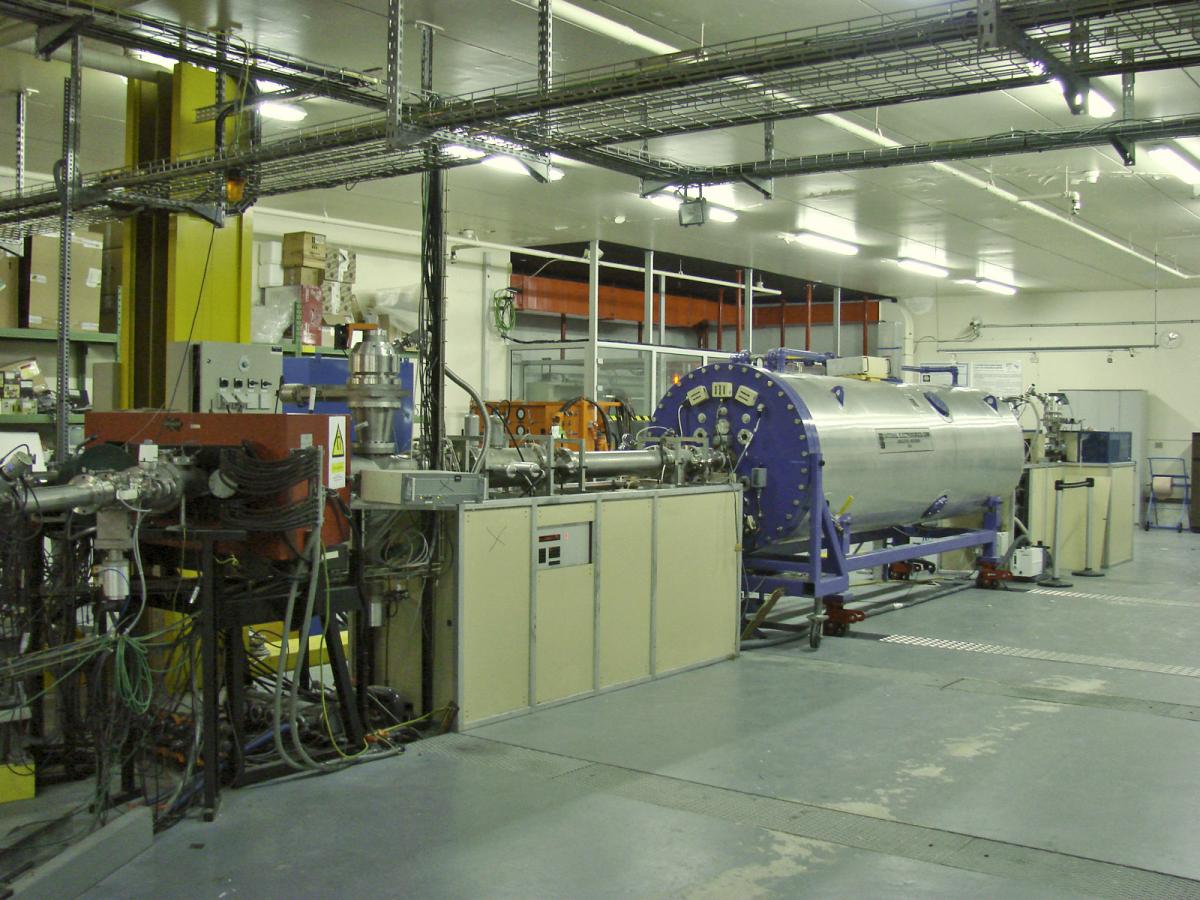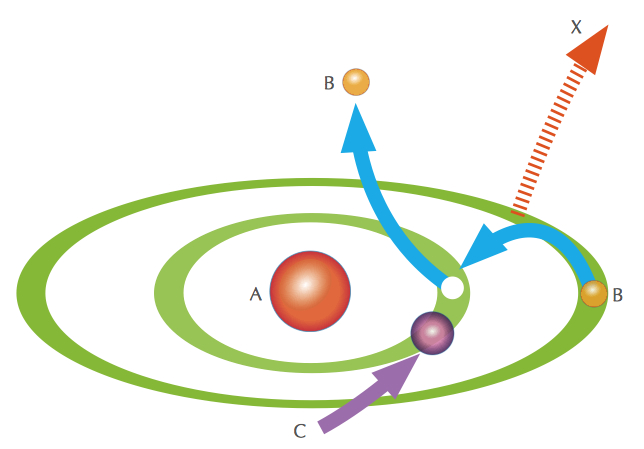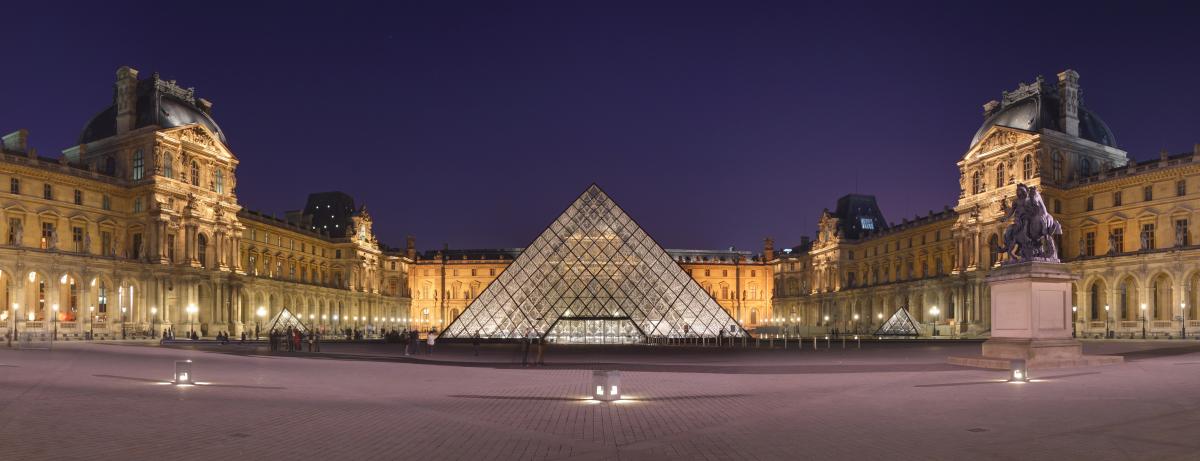Analysing art in the Louvre Understand article
Claire Pacheco explores ancient art puzzles with modern techniques.

accelerator at the Louvre.
Image courtesy of Jean-Pierre
Dalbéra
In the basement of the Louvre Museum in Paris, France, sits a much more modern artefact than the artworks on display upstairs: the museum’s particle accelerator. The Accélérateur Grand Louvre d’analyse élémentaire (AGLAE) produces beams of protons and alpha particles (helium nuclei) to look into the artworks of the museum. For example, scientists have used AGLAE to check whether a scabbard given to Napoleon Bonaparte by the French government was actually cast in solid gold (it was) and to identify the minerals in the hauntingly lifelike eyes of a 4500-year-old Egyptian sculpture known as The Seated Scribe (transparent rock crystal and white magnesium carbonate veined with thin red lines of iron oxide).
Helpfully, the techniques used by AGLAE are non-invasive, which is a top priority for cultural heritage, says Claire Pacheco, who leads the team that operates the machine.
The techniques used by AGLAE include particle-induced X-ray and gamma-ray emission spectrometries to identify the slightest traces of elements ranging from lithium to uranium. Claire explains that the positive ions from the accelerator are thrown onto the artwork at around 10% the speed of light. When the remaining electrons from the collided atoms recombine, X-rays are emitted. This is called PIXE (particle-induced X-ray emission). When the beam bumps into the nuclei of the atoms, other electromagnetic rays – gamma-rays – can be emitted. This is called PIGE (particle-induced gamma-ray emission).
Together these techniques excite the atoms within the artwork or artefact and the resulting spectra are picked up by AGLAE detectors. This enables Claire’s team, with the proper analysis, to identify and quantify the chemical elements present in the artefact, even in small amounts.

Image courtesy of Nicola Graf
These trace elements and the ratios between them, says Claire, can be geochemical signatures of mineral ores, for example. Identifying the amounts and combinations of elements that an object contains can serve as a fingerprint, telling researchers where minerals were mined – and how, and therefore when, an item was made. PIXE and PIGE are now used routinely by geologists, archaeologists, art conservators and others to help answer questions of provenance, dating and authenticity. The techniques are best suited to inorganic compounds such as stones, ceramics, glasses and metals.
Because the valuable nature of the works of art at the Louvre means they must stay inside the security area of the museum, AGLAE was installed in 1988 and is solely dedicated to museum analyses. Today, beamtime is split between research on objects from any of the 1220 national French museums and objects from further afield as long as the investigation deals with cultural heritage. The physicists and engineers who conduct AGLAE experiments typically work in collaboration with curators and art historians. AGLAE is the only particle accelerator that has been used solely for this field of research.
Before AGLAE, research facilities typically required samples to be placed in a potentially damaging vacuum. Researchers hoping to study large pieces were out of luck because the objects were too large for a vacuum chamber. However, while the accelerator in AGLAE needs a vaccum inside it, the particles can pass from that vacuum to the atmosphere and then into the sample. Because the beams work outside the vacuum, researchers can study objects of any size and shape; the beam just has to be aimed at the object to be studied.
Claire began working with ion-beam analysis at AGLAE while pursuing her doctorate in ancient materials at the University of Bordeaux in France, where she specialised in Islamic ceramics. She took over as lead scientist in 2011 and now operates the particle accelerator with a team of three engineers.
While AGLAE frequently studies items from the local collection, it has a larger mission to study art and relics from museums all around France and beyond. This means that Claire has seen a wide variety of artefacts and artworks in her work.
“I couldn’t help shivering in front of a perfectly preserved Neolithic necklace (4000 BC) found in a grave in Brittany,” explains Claire. The necklace was made of variscite – a green stone – that the AGLAE analyses revealed came from the Iberian peninsula. Sometimes what she learns during the investigation, or the context of the piece being studied, can affect Claire. Another artefact that made an impact was an ancient Greek doll made of clay: it was found in a little girl’s grave.

Image courtesy of Benh LIEU
SONG; image source:
Wikimedia Commons
Ion beam analysis gives specific information that can be very helpful in answering questions dealing with humanities or conservation science, explains Claire. It can really add extra context, she adds: “Determining the origin of the raw materials can be useful to understand the trade routes of a specific civilisation and can provide clues to the making process.” This can help researchers understand the interactions between different manufacturers or confirm a loss of know-how at a particular time and place. “It’s so marvellous,” she says. “We are very, very lucky to work in this environment and study these objects.”
However, one thing that AGLAE is not so good at analysing is paintings like the Louvre’s most famous resident, the Mona Lisa. Whereas the pigments used in the paints are often inorganic, the binders used to mix up the paints are often organic. Therefore the instrument’s particle analysis techniques carry a slight risk of damaging the paints through chemical modification. This, says Claire, is a burning issue that is being studied at an international level and the subject of recent technical meetings.
Back at AGLAE, an upgrade is now in progress to add more sensitive detectors so that a lower-powered particle beam could be used. The new system will also allow for automation so that more analyses can take place. In the future, even more artworks could be under the care of Claire and her team as they work to discover just how the great masters of the past wove their magic.
Resources
- To read a report (in French) about the Neolithic necklace that Claire analysed, you can visit the Centre de Recherche et de Restauration des Musées de France (C2RMF) website.
- To learn more about the application of science to art conservation, see:
- Leigh V (2009) The science of preserving art. Science in School 12: 70-75.
Review
This interesting article to show how modern science can combine with historical issues. The article describes the use of modern particle physics tools to work on historical paintings or other material. AGLAE the novel system at the Louvre in Paris uses a particle accelerator to identify properties of historic objects.
Questions for you to discuss with your students could be:
- How does AGLAE work?
- Describe an application for AGLAE.
- Describe some limitations of the AGLAE procedures.
Gerdt Vogt, Higher Secondary School for Environment and Economics, Yspertal, Austria





